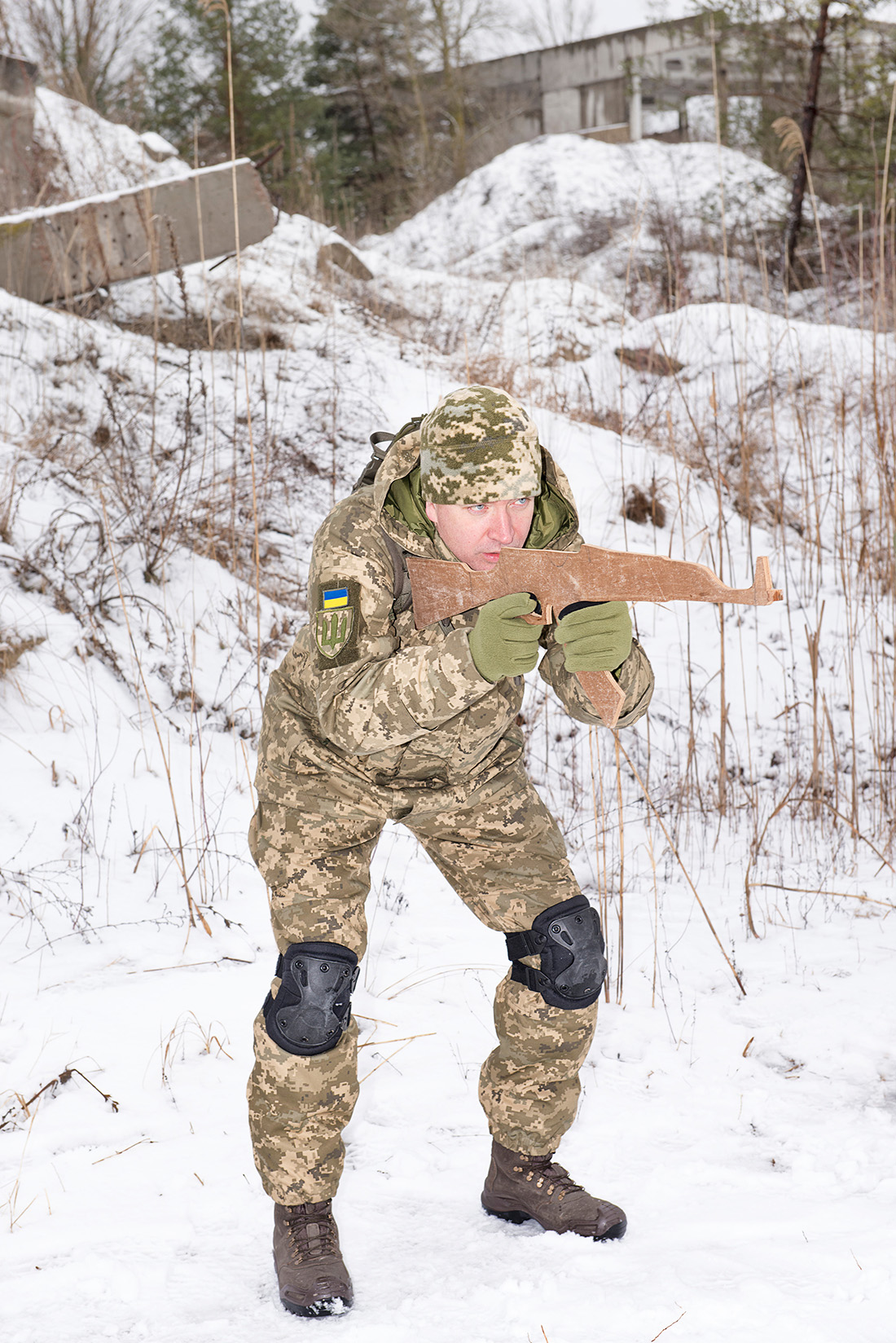Caimi & Piccinni picture brave Ukrainians just weeks before the Russian invasion
© Caimi & Piccinni.
Source:
A 'tactical medicine course' takes place in the bushes of Plesets'ke, on the outskirts of Kiev. The students, all ordinary citizens with no experience, learn the basics of first aid in war situations. Simulations of different challenging situations are staged by the students under the guidance of a veteran or a reservist soldier. © Caimi & Piccinni.
Source:Weekend warfare training in the Desnyans'kyi District is run by the Kiev Territorial Defence Corps. These courses are aimed at ordinary citizens and take place in a remote wooded area on the outskirts of the capital. © Caimi & Piccinni.
Source:Veterans, reservist soldiers from paramilitary battalions and a priest greet a large crowd attending war training sessions on the river beaches of Hydropark, one of the city's most popular weekend spots. In the two-hour demonstration sessions aimed at ordinary citizens, courses range from AK47 rifle handling to survival strategies.© Caimi & Piccinni.
Source:A young lady trains in the bushes of Plesets'ke on the outskirts of Kyiv during the free weekend war workshop organized by a paramilitary group of soldiers. Trainees are ordinary people and are asked to escape after an explosion, which is simulated with a smoke grenade. A tunnel of tractor wires was set up as an escape path. © Caimi & Piccinni.
Source:One of the targets available at Liski District Tactica Polygon with different subjects. This one bears the image of Putin and is one of the most popular of the "fun" ones. Apprentices here are usually private businessmen and people with good financial resources, as polygons are usually very expensive. An 8 mm rifle bullet costs on average one euro and many are used during a one-hour training session. © Caimi & Piccinni.
Source:© 2022 - 1854 MEDIA LTD